By Yanic Simard, Houzz

Arched windows and doors are beautiful architectural features that can add a lot of personality and a sense of character to your home. But as with any other standout feature, they deserve a little consideration to help them look their best. To make sure your interior decor works with these elegant curves and not against them, follow these tips for making arched windows and doors feel right at home.
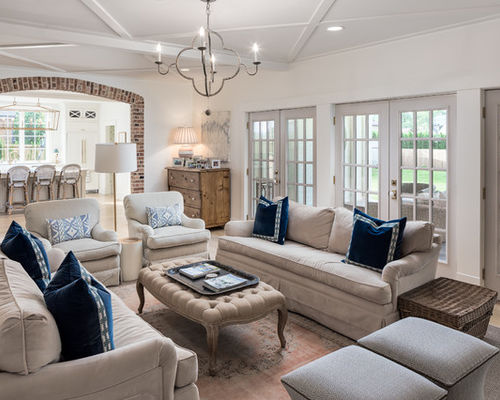
CDP Architecture LLC, original photo on Houzz
Embrace Curves
When any element in a room is unique, it can really stand out. That can make the element a star or just make it look out of place. If a room has a single arched door or window, and nothing else with a similar curve, it may not feel harmonious with the rest of the decor. Adding some other soft curves to the space will help everything work together elegantly.
The room above has an arched interior doorway, but the other architectural features are rectangular. The furniture includes straight and curving lines to bridge these two elements in a subtle way. It’s especially noticeable in the soft corners of the plump seating, which contrast the crisp rectangles of the chest of drawers.
How to Work With Crown Molding 101
One of the easiest ways to add some complementary curves (especially in a space without a lot of furniture, such as a kitchen) is by adding circular light fixtures.
Another easy add: a vintage (or vintage-inspired) mirror with a curvy shape. This will echo the look of a nearby arched window or door, bringing the shape to a different wall elsewhere in the room.
Don’t worry about the curves being exactly the same. Just consider whether the arch is a full semicircle or a softer, wider curve, and introduce some elements in a roughly similar shape.
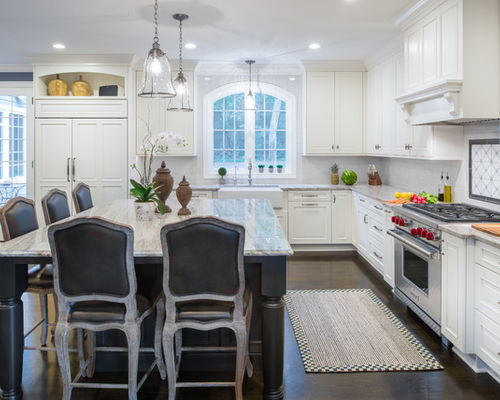
Leslie Meyers, original photo on Houzz
Get Repetitive
Another trick is to repeat the arch in other architectural components such as cabinetry. The simple arched open cabinet above the fridge here approximately repeats the arch of the window frame, so it doesn’t stand alone as the only curved element in an otherwise rectilinear space.
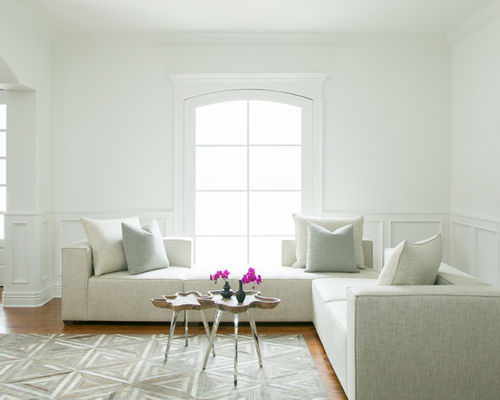
HOWSE, original photo on Houzz
Square Off
Rather than adding arched shapes to other walls, this room uses molding to bring a more rectangular shape to the large window. Using a deep header with a linear top gives a door or window a grand look and a classical air. After all, the simple combination of a circle and square is a staple component of architecture dating back to before Roman times.
If you have a lot of molding in a space, another way to make arched doorways connect elegantly with other rectangular elements is to use a square capital — the proper term for the flared top part of each apparent “column” that the arch then sits upon — on each side of the door.
Colorful Curtains and Drapes to Accent Your Room
You can place the capitals a little lower or higher on the door to make them line up with another element, such as the top of a shorter door or a nearby window frame, for a great sense of repetition and harmony.
You can also use wall molding to fill in the empty corners above an arch to create a complete rectangular shape.
Make It a Feature
The tips so far have focused on helping an arched window or door blend in, but what if you want it to stand out? You can turn an arch into a breakout architectural feature, but make sure it looks intentional. A coat of a deep color like charcoal or black gives a very manor-like appeal that frames the view beyond dramatically, much like a crisp black picture frame.
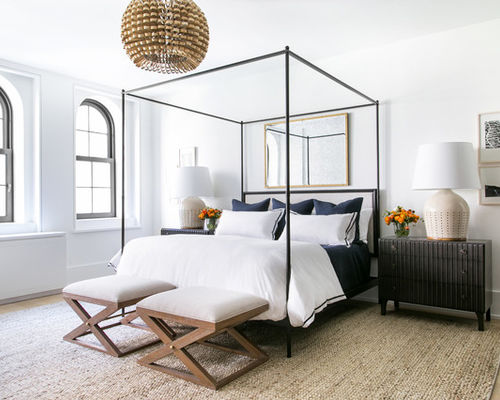
Chango & Co, original photo on Houzz
Again, it still helps to use some repetition to help your featured arches stay harmonious with the rest of your decor. This room repeats the linear black elements of the window in the thin bedposts, and also uses curved light fixtures for some subtle connections.
You can also make a feature out of a curved element (especially a singular window) by simply keeping everything else in the room much more subtle.
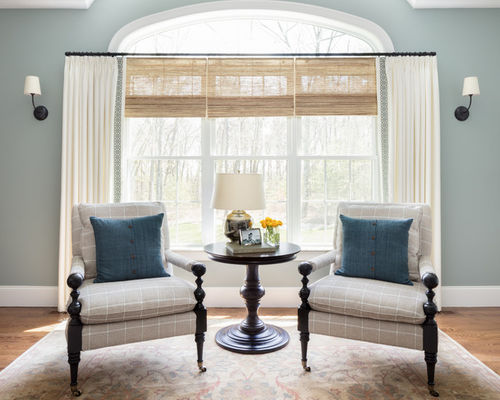
Bee’s Knees Design LLC, original photo on Houzz
Dress it Up
So what about when you want to dress an arched window with a drapery treatment? One approach is to ignore the arched portion and dress the rectangular portion only with a standard straight drapery rod.
This approach can be very smart looking for cases where a single arch rises above the height of other, rectangular windows. However, this leaves an area of the window uncovered, which could be an issue in the morning hours when you may not want light streaming in.
Personal preference and the amount of light your window receives will affect whether this makes sense for your situation.
The exposed portion of the window not covered by the drapery can be covered by a separate fixed drape, or a shade that hangs behind the drapery. This piece will likely then not be openable, so you will have to be comfortable with a portion of the window being perpetually covered.
Vintage Wall Mirrors in Every Shape and Size
To avoid these issues altogether and create a streamlined look, designers will often drape an arched window high up and straight across so that when drawn shut it covers the entire window, arch and all. This leaves some wall covered but can make the window appear even bigger and more impressive.
This approach can work for a single arched window or even a group of windows on one wall, revealing the curves when drawn open. In such a case, it’s common to start the drapery at just below ceiling height rather than at the top of the arch, to give a clean look when pulled shut.
Keep in kind that when pulled open, draperies will still take up some space. If you want to see a good portion of the arch when the drapes are open, you’ll need to make sure they have enough space to gather out of the way or are light enough to be able to gather tightly.
When it comes to shutters and shades, these too can begin from above or below the curve, depending on preference. If you want to be able to cover the entire window with a shade, consider building out a rectangular molding outside the curve to house the shade in a polished way that suits older or traditional homes. Using just the shade itself hung outside the frame will create a more modern and minimalist effect.
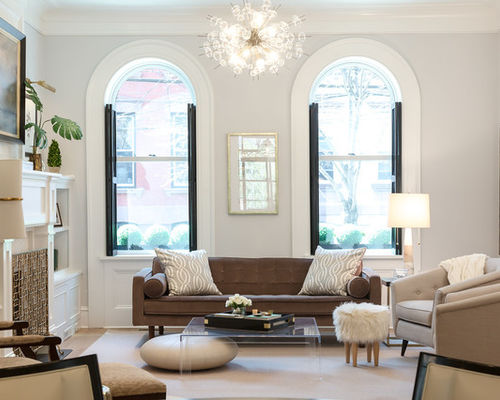
Mowery Marsh Architects LLC, original photo on Houzz
Shutters can follow the entire curve or simply end where the curve begins and look quite polished without any “cap.” Bifold shutters like these will be able to open and tuck out of the way, so you can enjoy the simple beauty of your arched window uninterrupted during the day, with the verticals of the shutters almost demanding that the eye look up and appreciate your pleasing architectural feature.
